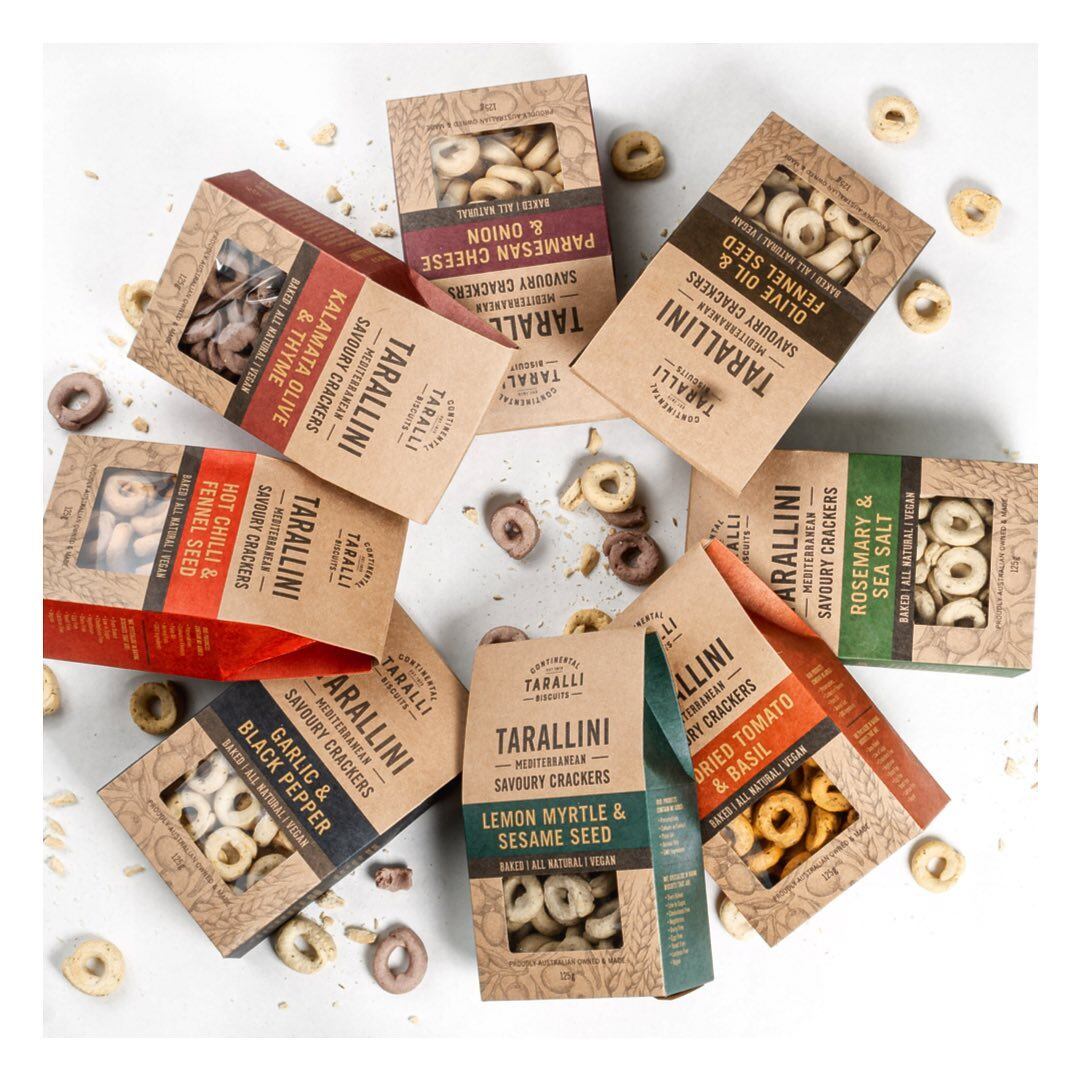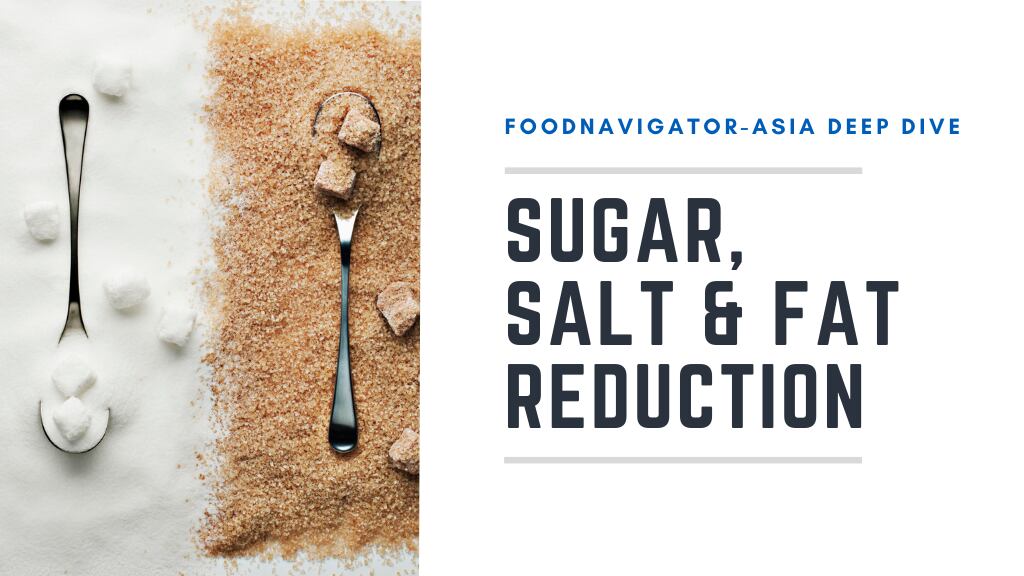Post-COVID-19 impact: Rise of in-home consumption and consumer demand for stability and connection
The COVID-19 pandemic has changed the food and beverage industry in many ways, but none more obvious that the rise in in-home cooking and consumption as an impact of the lockdowns imposed in many countries.
As a result, food products catering to this need have seen a large boost, and most industry players this is a trend that will be sustained for quite some time into the foreseeable future.
“Since the pandemic hit, we’ve seen a large increase in demand for flavours used to cook [and not just sprinkle on], and this been holding quite steady,” McCormick Australia Managing Director Paris Golden said.
“We believe this is because during the course of the lockdowns, people have learnt all these new skills and reengaged with cooking and using flavours, so this is something they now want to continue using, and is the reason we’re seeing sustained growth in those related products.
“All the fundamentals for continued high growth for this area into 2022 are there, especially within the APAC region – we’ve got younger consumers searching for new experiences and flavours and wanting to try new things, and the macroeconomic drivers are strong too.”
In addition to cooking, the rise of in-home consumption has also meant increased demand for larger packaging sizes to feed families as well as reduce the number of trips to the store, according to snacks giant Mondelez.
“What we have seen is a rise in demand for in-home family big packs of our products, as consumers are staying home more,” Mondelez International Head of Marketing for Malaysia and Singapore Arpan Sur said.
“But even more than that, we have found that consumers are craving more stability and connection to the brands they are purchasing from, and to that end we have developed our ‘humaning’ approach towards marketing to them, which involves a lot more empathy and consumer-centricism.
“Consumers are swamped with choices and have many options to choose from today – they will only notice and remember a brand if it is truly relevant to them, and appeals in an authentic and genuine way.
“So it is crucial to put the consumers at heart when selling to them, as if not it is the brand that will lose out in the end as consumers simply won’t care and stop buying from the brand.”
ASEAN plant-based market ruled by pricing and taste
The rise of plant-based products globally is no secret, but the major drivers in various markets are seeing various differences. For example, in western cultures like Europe and Australia, the main industry driver is well-known to be sustainability.
In Asia and particularly the ASEAN market, health and wellness is a big driver, but product pricing and taste are currently also at the very top in terms of consumer priority.
“Consumers here are more price-driven, and it is very important for firms in the plant-based industry to keep this in mind when making products moving into 2022,” said Ahmad Syafik Jaafar, Co-Founder and Head of Strategy at Malaysia’s IRA NOAH which produces plant-based and hybrid meat brand NANKA.
“We need to maintain that price competitiveness to ensure the products are accessible to everyone, and at the same time taste must also be prioritised.
“In countries like Malaysia, consumers are price-sensitive yet also prepared to pay a bit more for food that can give that gastronomic adventure. So providing products that can satisfy these ‘fussy’ tastebuds whilst also maintaining price competitiveness is really that sweet spot to grow to a larger scale.”
Nestle Malaysia launched its first plant-based meat range Harvest Gourmet earlier this year, and alongside this the firm has also concurred that product affordability is very important within its expansion strategy.
“We are aware that many of our brands are an important source of nutrition for the B40 (Bottom 40% in terms of income range) in Malaysia, and that many of these consumers have been impacted financially and are struggling at the moment,” Nestle Malaysia and Singapore CEO Juan Aranols told us previously.
“As such, in addition to community programmes we also are making sure to do our part and offer product value for money – in fact, I feel that the F&B industry as a whole needs to be mindful about this, and continue to ensure the affordability of F&B products, especially for this large part of the population.
“There are other plant-based products out there too which are mostly imported and rather expensive, [but] we need to make prices affordable so these can be available to all Malaysian families – this is the key to driving growth.”
Increased adoption of sustainable palm oil sourcing
Food and beverage manufacturers are partial to using palm oil as the oil of choice in making products due to its lower cost as well as physical characteristics, but over the past few years palm oil has been suffering from various reputational issues from negative impacts on the environment to unethical labour practices.
Sustainable palm oil has long been touted as the solution to the reputational issues that the industry is currently facing, and as a result various big brands have committed to sourcing certified sustainable palm oil for all their production.
One of these is Japan’s Nissin Foods Group, where most of its instant noodles are flash fried in palm oil to extract moisture, allowing it to be stored for a long period without spoiling as palm oil does not oxidise easily.
The firm has set itself a target of procuring 100% sustainable palm oil by March 2031 for the overall business.
As of March 2021, it has procured 26% of palm oil certified by the Roundtable on Sustainable Palm Oil (RSPO), an increase of 6% from the year before.
“In the domestic instant noodle business, we are aiming to achieve 100% of our palm oil procurement that can be assessed as sustainable by end of March 2026,” said Yuya Ichikawa, assistant manager of Sustainability Promotion Office at Nissin Foods Holdings.
Snack company Calbee has also set itself a target of procuring 100% certified palm oil by 2030, through purchasing RSPO-certified palm oil or buying RSPO credits, as has food and beverage giant Nestle.
“When produced responsibly, [sustainable palm oil] can support millions of livelihoods and reduce pressure on forests and sensitive ecosystems. Effective management of risks requires industry-wide change, and we are committed to collaborations [to] drive innovation and industry-wide transformation,” said Nestle.
“As of 2020, 85% of palm oil used by Nestle is responsibly sourced. 96% of this traceable to mill, 70% traceable to plantation and 70% assessed as deforestation-free.”
Nestle has also published a palm oil transparency dashboard as well as a list of its suppliers and mills within its supply chain in an effort to provide full supply chain disclosure regarding its sustainable palm oil sourcing.
The use of sustainable palm oil is also a big thing at the ingredient supplier stage – one of the largest firms in this area, Cargill, has also highlighted its focus in this area within its specialty fats business.
“RSPO-certified palm oil helps drive transparent sourcing practices, engages suppliers, and calls for rigorous monitoring and verification practices,” said Cargill Malaysia edible oils business Regional Strategy and Innovation Leader Jonathan Yeo.
“The goal is to give our customers and consumers confidence in our sourcing practices and reaffirms our commitment to supporting sustainable practices throughout our operations.
“[This is crucial because] sustainability [is becoming] a growing concern for both customers and consumers [based on findings from] Cargill research on consumer attitudes towards fats and oils.”
Online groceries choosing to go into private label
Private label products are valued by consumers for being more economical versions of everyday groceries, and are especially popular in reputable supermarkets where they believe quality can be trusted, such as Woolworths’ own-brand products and Cold Storage’s Meadows.
With the rise of online shopping, various platforms have now reached a stage where they have gained enough consumer trust to venture into developing their own private label products as well – such as in China, the country with the largest online grocery market in the world.
For companies like MissFresh and Dingdong, developing and launching private label or in-house brands is one way to cultivate customer loyalty and improve margins in the increasingly competitive space.
Hui Zhang, public relations director at Dingdong said: “Basic grocery products are becoming more diversified and businesses are customising, tailoring tastes and preferences to consumers.
For instance, Missfresh’s in-house brand is called Xiang An Xin and now carries 200 SKUs including meat, eggs, vegetables, and baked goods.
Dingdong’s private label brands include Boxing Crayfish selling flavoured crayfish such as lychee, hawthorn and brandy, hot pot soup brand Damanguan, which sells 18 hot pot flavours ranging from butter-spice to tomato-ox bone, and most recently a new breed of “light” potato. The “light” potato has a low amylopectin ratio and carbohydrate content, making it an ideal staple food for carb-conscious consumers.
“From a long-term perspective, we expect the GMV contributions from our private label brands to reach as high as 30%, increasing from 5.8% in the third quarter of 2021,” Hui said.
Xi Chen, co-chief financial officer at Missfresh said online sales of fresh food and fast-moving consumer goods have great potential for further growth.
“Overall lifestyle-related consumption has continued to grow in China, with more consumers becoming interested in using online retail for their fresh produce and FMCG needs,” she said.
“Online sales of fresh food will exceed RMB1 trillion (US$156 billion) by 2023, so it seems that the outlook for this market is quite bright.”
Both firms attributed the ability to grow its private labels products to their consumer research, fresh supply chain logistics, and the ability to source directly from the products’ place of origin whenever possible.
According to iResearch, the scale of the neighborhood retail market (fresh food + FMCG) will increase from RMB11.9tn (US$1.86tn) in 2020 to RMB15.7tn (US$2.46tn) in 2025; the online penetration rate will increase from 20.9% in 2020 to 45.5%; while the entire online volume will reach RMB7.2tn (US$1.13tn) in 2025.
According to Xi, “We believe it is a global trend for consumers to shift their grocery shopping channel from offline to online, especially after the COVID-19 pandemic. The capital markets also believe that the online grocery business has great growth potential and Gopuff, which is a private company, is valued at 44x price-to-sales ratio on account of its $15billion valuation.”
According to Hui, China’s online grocery model may be adopted in markets with growing demand and similar factors.
“Some countries which have a similar development trajectory as China may be able to adopt similar types of business models. Successfully rolling out online grocery businesses models requires several factors, including leapfrogging technology, significant urban density, lower cost of labor, high demand for convenience, and other range of factors which are not shared amongst all countries.”
“South East Asian countries offer fertile ground for new innovation and e-commerce specifically. South East Asia has a similar development path as China and other demographics which make the region a testing ground for many players.”
Canned products still in-demand for convenience even post-pandemic
During the COVID-19 pandemic, canned products saw an enormous leap in popularity as consumers rushed to stores to stock up on these during panic-buying sprees, prized for their long shelf-life.
Post-panic buying, one would have expected sales of these to have returned to pre-pandemic levels, but according to industry giant Ayam Brand this has not been the case.
“During the pandemic, people were hoarding our canned products as these were perceived to be very important as an emergency option and pantry-loading so there was a big jump in sales,” Ayam Brand Singapore Managing Director Roy Teo said.
“Interestingly, although many people bought these and overstocked at the time, what we have found is that sales have held up well, particularly for our premium products – this is encouraging as we believe although people bought these just to stock up then, they have found these to be good enough to make repeat purchases even if they weren’t canned food buyers previously.
Teo believes that this is being driven by canned foods’ ability to offer convenience and affordability to consumers, and this was unlocked once they discovered that good-quality canned foods are available as well.
“People were more willing to pay more during a crisis for the more premium products which they might not have been exposed to previously, and once they tried these, they decided to continue even post-pandemic – definitely the general demand for premium canned foods has been on the rise for us since COVID-19,” he said.
“In developed markets such as Singapore, the demand is very much for health and convenience as key driving forces in the food industry – convenience in particular is vital as many people are willing to buy instead of cook at home if possible. In this area, canned foods can offer consumers what they want so we do believe this category will continue to be very important moving forward.”





